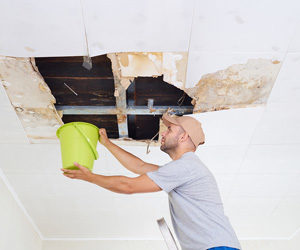Updated January 2024
Maryland’s picturesque landscapes and historic homes come with a challenge – the humid climate that fosters ideal conditions for mold growth. With summer dew points soaring and winter bringing its own moisture, combating and working to remove the mold in your Maryland home requires proactive measures. Especially for older homes along the Chesapeake Bay and Atlantic Ocean, where wind-driven rain adds to the challenge. The best way to approach mold is to prevent it before it becomes problematic. To help you prevent mold growth and maintain a mold-free home, here are some tips to follow.
Control Moisture

Ensure your bathrooms and laundry room have proper ventilation through operable windows and exhaust fans. It’s a great idea to open a window to promote air circulation and prevent mold contaminants from thriving. You might also consider upgrading to double-paned, insulated windows to further prevent moisture accumulation. If you own one of Maryland’s older homes, be aware that these homes often feature brick construction with failing mortar joints, making them susceptible to water intrusion. You can prevent this from happening by repairing the joints. Taking these actions now will go a long way in preventing the headache of finding mold later.
Insulate Properly
Maintaining proper insulation goes hand in hand with controlling moisture and is another important part of working to prevent mold growth in your home. Insulation helps prevent humidity and moisture fluctuations, especially when combined with air sealing. Be sure to insulate the right places with the right amount and type of insulation. For instance, for Maryland’s climate zone experts recommend insulating your uninsulated attic to a level of R-60. Check out Energy Star’s recommended insulation levels for other areas of your home.
Keeping your pipes, ductwork, and water heater tanks warm and dry also prevents condensation build-up. In below-grade spaces like your basement or crawlspace, closed-cell spray foam is the perfect choice to insulate and encapsulate those spaces to prevent moisture. Regularly inspect your insulation, especially in the attic, for water damage, deterioration, or compression and make sure the insulation in enclosed cavities doesn’t restrict airflow. Proper insulation is also a must in preventing your air conditioning system from becoming a source of moisture, contributing to a mold problem.
Maintain Cleanliness

- Act promptly to dry any spills, leaks, or flooding using towels, fans, and dehumidifiers.
- Establish weekly cleaning routines for high-moisture areas like bathrooms, kitchens, and laundry rooms.
- Remove clutter that provides surfaces for dust and mold growth.
- Disinfect window frames and sills that face Maryland’s moisture-laden winds.
- Keep rain gutters clear of debris to channel water away from the structure.
Replace Damaged Materials
Sometimes, even when you’re doing all the right things, mold happens. That’s ok. Continue regularly inspecting trouble areas like carpets, drywall, and baseboards for signs of mold growing. If you find signs of mold damage, be sure to swiftly replace any affected insulation, carpeting, or drywall. Containing and removing materials showing mold damage is crucial, as mold spores propagate quickly in Maryland’s humid conditions. Never hesitate to contact a professional mold remediation company for help, especially when dealing with dangerous black mold or extensive water damage. Also, remember to opt for mold-resistant building materials when renovating your bathrooms or basement.
Your Partner in Mold Prevention
By taking control of moisture, ensuring proper insulation, maintaining cleanliness, and promptly replacing compromised materials, you can significantly reduce the mold in your home and mold issues exacerbated by Maryland’s humid continental climate. Remember, prevention is key, and staying vigilant against mold growth and the danger mold can bring is essential for a healthy home environment. At East Coast Mold Remediation, our professional mold removal team is ready to eliminate all types of mold from your Baltimore area home. If you suspect a mold issue in your home or have additional questions, contact us today for a mold inspection.



